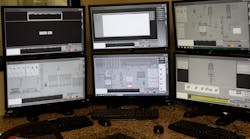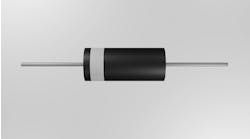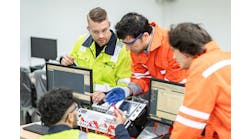When it comes to machine control or motion control, the preferred device is often based on the history of the original equipment manufacturer (OEM) and its familiarity with a certain architecture. Sometimes it’s an end-user choice made by the factory or plant where the equipment will be installed and integrated. The application itself is a major consideration. And the component shortage in the aftermath of the global pandemic has had an effect on availability that’s impacted some OEMs’ decisions, primarily on brand, but sometimes on type.
From programmable logic controllers (PLCs) and programmable automation controllers (PACs) to PC-based control and computer numerical control (CNC), the choice of platform is typically dictated by the technical expertise and experience of the controls engineers designing and building the manufacturing equipment.
Each machine builder, system integrator or engineering firm has its own wheelhouse, and the projects it chooses to undertake are often decided by the needs or requirements of the factory or plant where the machinery will be installed or integrated into existing production lines. Relationships with similarly minded end users puts the controls engineer in sync with industrial factory engineers.
One-hit wonder or up-and-comer?
“It all depends on the application at hand,” explains Sam Hoff, chief executive officer, Patti Engineering, a CSIA-certified system integrator in Auburn Hills, Michigan. “I will say that PC-based control seems to be a fad that has passed. Hardened PLCs can run for decades without the requirement for an upgrade, whereas PC-based controls usually need to be upgraded within a decade.”
Has PC-based control already outlived its usefulness? Or are programmers only beginning to unlock its potential?
“We see PC-based automation is getting popular,” says Joseph Yang, director of product management at Advantech. Software has become popular and mature, and it can be applied to X86-based instruction set architectures (ISAs) that were originally developed for Intel’s 8086 microprocessor. “Workload consolidation is much easier to integrate into X86 PC-based solutions,” notes Yang. “Customers prefer solutions without being locked in by specific vendors. They can find multiple vendors in PC-based solutions.”
Vendor-agnostic control options have their advantages, especially as the trend to democratize automation gains momentum. Still, the installed base of PLCs looks as big as a hanging curveball, so the temptation to stick with it is difficult to resist.
"We still see many PLCs out there, and, as long as vendors will support them or make them upgradable, it’s pretty hard to yank them out," explains Jason Andersen, vice president, strategy and business line management, Stratus Technologies.
"Siemens and Allen-Bradley largely control this space because they have the specifications and expertise," says Allison Sabia, president and CEO of Galco Industrial Electronics.
“For our customer base, PLC control is prevalent,” concurs Jeff Clonts, tech application support manager at RS.
“The preferred motion control device is still the PLC,” agrees Freeman Smith, founder of Nufactur. “It feels like people have been calling for something to usurp PLCs for decades, but to paraphrase Mark Twain, reports of its death are greatly exaggerated. Proponents of PACs and PC-based automation will cite flexibility and lack of proprietary control as reasons those devices will surpass the PLC in popularity. However, as automation systems are more frequently being handled on the factory floor, sacrificing the flexibility of a PAC is worth it for a more user-friendly brand-name PLC.” Also, as cybersecurity demand grows, trusted protocols and industrial standards are more important than customizing a program on a PC, notes Smith.
“Historically, the preferred industrial controller has been a stand-alone PLC,” notes Cory Engel, application engineer at Automation24. “This has been for several reasons, such as a PLC having integrated and expandable I/O and a well-known method of setup and programming and having a hardware construction designed for rougher industrial settings. However, there are plenty of PC-based systems in use today where the PC is located in a temperature/humidity-controlled part of the plant, and it communicates with or provides control to remote I/O devices located in the dirtier and hotter areas of the plant. When it comes to modern industrial control systems, there are often several ways to solve the same problem, and the options are only increasing as robust PCs suited for plant conditions are being continually developed. It’s best to specify a control device based on the primary needs of the application.” In this way, you can select a control device by matching its strongest attributes to the primary needs of the application, explains Engel.
“We believe the world of fixed use is rapidly coming to an end,“ explains Mark Steffens, CEO, Airline Hydraulics. “Processors are super powerful across all areas, and the flexibility of I/O systems lends itself to PLC, PAC, CNC and other applications. Airline's experts see the need for open-core controllers to democratize the controller marketplace. For future programmers, the ability to write code in their preferred language will be a driver for their technology selection. Open-core controller companies partner with crowdsource programming in developer portals for all to bring in for free or at a small one-time cost. This truly makes this world a smaller place, more focused on the user, not large companies’ price-gouging for software licenses and technical-service contracts.”
There’s more to control than PC and PLC
The lines between these devices are becoming blurrier, says Larry Stepniak, electrical engineer at Flint Group in North Carolina, “but I would prefer PAC for machine or motion control.” The differences between PLCs and PACs are not well-defined, he admits. “Greater processing power and functionality give a nod toward PAC, but there is no standard definition, and the vendors do not seem to agree on which is which. For machine control, PLC or PAC is the default. For motion control, the choice is more debatable. With motion-device configuration and programming integrated into the programming environment, it seems that a PAC has the advantage here, as well. The trend is leaning toward motion integration, even in the less-expensive controller options.”
PC-based control is not a good option, in Stepniak’s opinion. “If the associated hardware is connected via a standard PC interface, such as USB, and not through some sort of proprietary plug-in hardware, such as peripheral component interconnect (PCI), it is easier to maintain longevity,” he explains. “Another problem is that the vendor is not in charge of operating-system upgrades, which can potentially bring everything to a halt. In some cases, the disrupting update can be rolled back, allowing the system to run again. In other cases, there had better be a good backup available.”
Computer numerical control (CNC) is a standard in mills and lathes, explains Stepniak. “There exists a well-trained and experienced workforce for this control method with no real reason to change,” he says. “It usually consists of a PLC for machine control with a numerical controller handling the more complex tasks. The line between CNC and PAC with integrated motion is very blurry from a hardware standpoint. The main difference is really in the interface and programming, although G-code is intruding into robotics applications.”
Advances in hardware and programming seem to be making these systems converge toward a central type, predicts Stepniak. “A dedicated PAC with motion-control modules may ultimately be the end product of this convergence, with the operator interface tailored to whichever method the end user prefers,” he says.
“Sterling Systems & Controls’ systems integration business model is built around the programmable automation controller (PAC) since it is robust and reliable,” says Mike Drew, engineering manager at Sterling. “In the past we used PC-based solutions, but the IT world moves at a different pace than the industrial world, and, especially with the forced updates to modern operating systems and the speed at which PC operating systems and hardware become obsolete, it makes PC-based solutions hard to keep up with and not as reliable as other solutions (Figure 1).”
“Plant operations and customers typically dictate what they are comfortable with,” explains Tobey Strauch, an electrical engineer with 20 years of experience in controls and automation who works as independent principal industrial controls engineer based in Fremont, California. “PACs seem to be more the norm these days, as most PLCs are now tag-based. This is different than typical PLCs. Due to the number of controllers in the field that are obsolete, it is important to understand that there are a lot of hybrid systems.”
Strauch prefers the CoDeSys-based platforms “due to the flexibility between I/O and data,” she says. “Rockwell has the most presence in interfacing due to popularity. Asian controllers such as Omron and Mitsubishi have excelled in speed needed in CNC environments.” For a distributed control system (DCS), Strauch likes the Siemens PCS platform with the PACs and PC-based virtual machines.
And what about motion control specifically? "When it comes to machine control, you may think you need to choose between a programmable logic controller (PLC) or motion controller," says Daniel Weiss, senior product manager, Newark. “In many cases, the PLC does in fact eliminate the need to have a motion controller. And, in others, the motion controller makes the PLC redundant and unnecessary by handling all the motion-control tasks required for your application. While it’s true you can reach for one controller over the other, there’s a third option that combines the two into a hybrid architecture—a setup that is typical of many high-performance machines. PLCs are machine controllers that also integrate motion and safety functions. In addition to the PLC itself, these architectures include the human-machine interface (HMI) and various sensors and drives.”
Although these setups are flexible, easy to install and reliable in industrial environments, they tend to have limited motion capabilities and processing power, as well as slower servo control sampling and update rates, explains Weiss. “On the other hand, the motion controller is dedicated to motion control, making its motion capabilities much more expansive than that of the PLC,” he notes. “These machine architectures tend to integrate powerful processors and high-speed process execution and data acquisition. They also offer several advantages in terms of motion performance, such as greater repeatability, velocity control and settling time. In addition, motion controllers are well-suited for machines employing PC-based control and include more powerful profile generation and tuning tools.”





